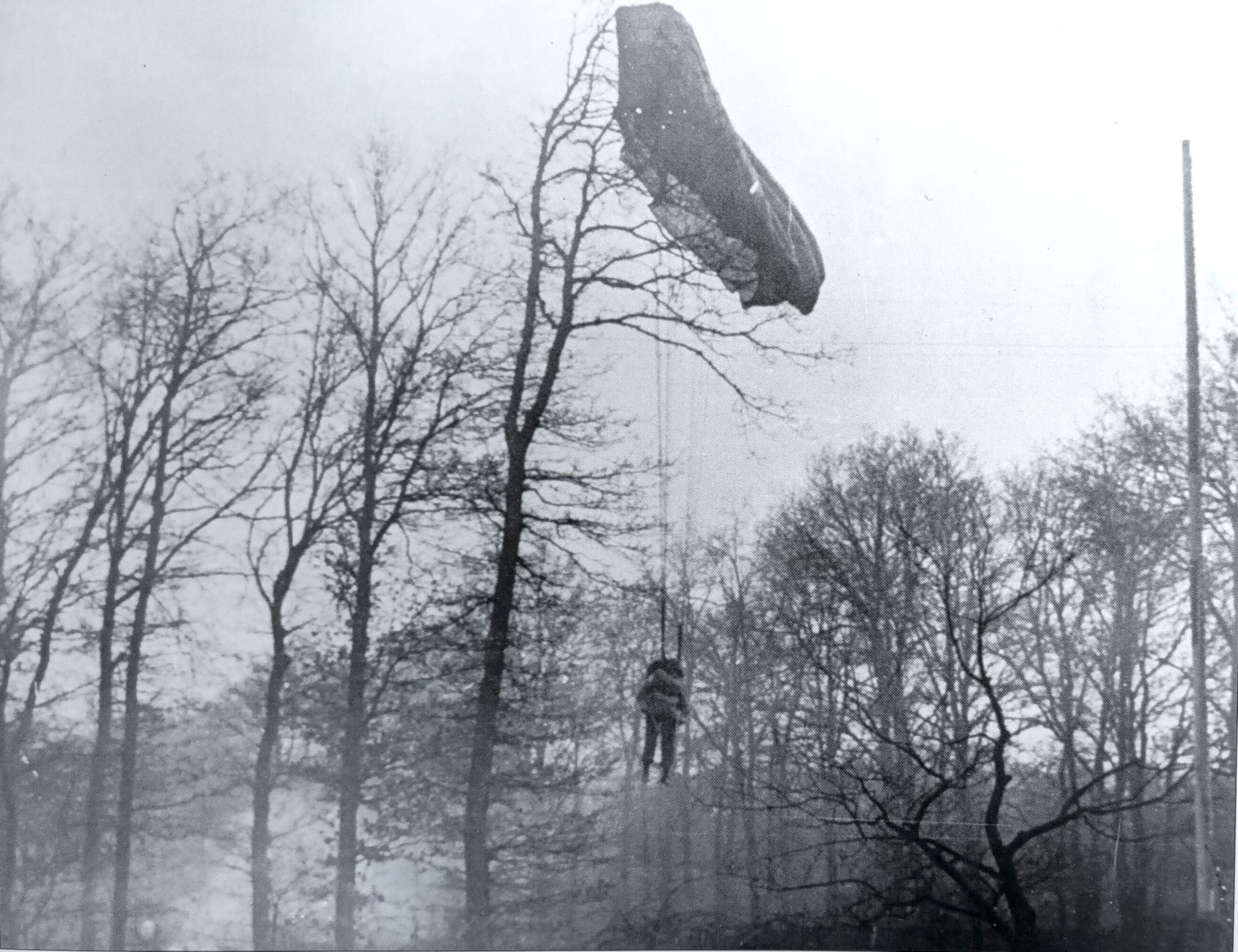The Para Hanging from a Tree
An American paratrooper hangs lifeless in his harness, the parachute caught in the branches of a tree. He never reached German soil to take up the fight. This soldiers life ended on a Saturday morning - on March 24, 1945, near the village of Hamminkeln.

The photo has been featured in numerous publications on "Operation Varsity," the Allied airborne landing east of the Rhine. The dead US paratrooper was photographed several times in March 1945, making it possible to determine where exactly he died. The photos were taken on Kastanienstraße in the Heiderott area of Hamminkeln, where a small railroad crossing over the Wesel-Emmerich railway line still exists. Following the path over the tracks will take hikers and cyclists to a pond woods, known as “Schwarzes Wasser”. Little has changed in the Heiderott area since 1945. Farms, narrow farm roads, pastures and fields, bordered by the typical fencing, still characterize the landscape today – as they did decades ago. Just a few metres from the railroad crossing where the dead man was found hanging from an oak tree, a mighty chestnut tree - a „Kastanie“ in German - stood in meadow near the Fuhrmannshof farm. It gave the street its name – today, only a pitiful remnant of the chestnut tree remains.
On March 24, 1945, the area was a flashpoint of the fighting. Numerous photographs were taken along Kastanienstraße that bear witness to the events. At the time, Allied planners had selected the area as landing zone "N" for over 300 American gliders. Before the gliders were due to arrive that morning, more than 2000 soldiers of the American 513th Parachute Infantry Regiment were to land in the area nearby, designated as drop zone „X", shortly after 10 AM. Their task was to neutralize the German defenders and secure the landing zone. But the US paratroopers were misdropped, landing much further to the north. The first and only soldiers to parachute into Heiderott, starting at 10:25 AM, were soldiers of the 466th Parachute Field Artillery Battalion – exactly as planned. However, that plan had not envisaged that they would be left alone without the infantry. Therefore, it is quite likely that the dead man in the tree could be a soldier of 466th Parachute Field Artillery Battalion. Its soldiers were forced to engage the Germans in this area - on their own - before the glider landings began at 12:00 AM. The 466th Parachute Artillery Battalion had an overall strength of 440 men and fielded 12 guns. Each gun could be disassembled and was dropped in several parachute pack loads. On March 24th, 44 soldiers of the battalion were killed; three died on March 25th, and two more died of wounds later. The unit thus incurred fatal losses of more than 11 percent – an unusually high rate. Presumably, one of these dead was the soldier who was hanging from a tree at the railroad crossing on Kastanienstraße. To this day, his exact identity remains unknown.